Today, we will delve into the fascinating world of tension settings for engagement and other rings. These settings have gained popularity among diamond and jewelry enthusiasts, and we’re here to provide you with all the essential information you need to know about them. So, get ready to discover the ins and outs of tension settings!
If you’re seeking a sleek and minimalist piece of jewelry that also elevates your overall aesthetic, a tension-set design is an excellent choice. Its simplicity and unique appeal make it a captivating option for those who appreciate understated elegance.
Throughout this guide, we will cover various aspects of tension settings, including what exactly a tension-set engagement ring entails, the historical background of tension settings, the advantages and disadvantages they offer, and much more.
So, join us as we explore the fascinating realm of tension settings and equip you with the knowledge you need to make informed decisions about this captivating setting style.
DESIGN YOUR OWN ENGAGEMENT RING: START WITH A SETTING OR START WITH A DIAMOND. IT’S REALLY UP TO YOU!
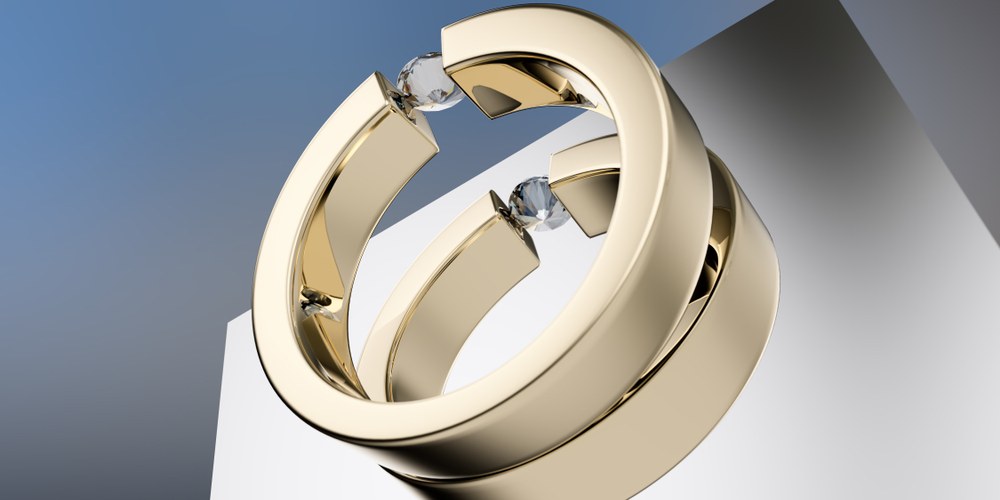
What Exactly Are Tension Setting Rings?
The tension design is a minimalist ring setting that creates the illusion of a diamond or gemstone suspended midair within the ring’s band.
Originally developed in the late 1960s, tension settings utilize specially treated metals with inherent flexibility to hold the stone securely. We will delve into the history of tension settings in a later section.
Unlike traditional prong settings, the entire band of the ring acts as two significant prongs, cradling the stone with carefully carved recesses that accommodate the stone’s girdle.
With a tensile strength ranging from 65 to 95 pounds, the stone is held in place, giving it a distinctive floating appearance.
Many couples initially express concerns about the security of tension settings since the stone is supported by only two points.
Instead of the more common four or six points of contact found in prong settings or complete contact settings like flush or bezel designs, the tension setting relies on direct contact between the metal and the stone.
In fact, the stone is held more securely in a tension setting compared to a traditional prong setting. This is because the metal used for tension settings is typically stronger, and a larger portion of the metal comes into contact with the stone, resulting in a tighter and stronger grip.
Due to the custom nature of tension settings, the ring is crafted specifically for the purchased diamond. The setting is calibrated to fit the chosen diamond precisely and cannot be modified or resized after purchase. Resizing a tension setting is a complex process, which we will discuss further in this article.
Laser technology is employed to calibrate the setting, ensuring precise and proportionate pressure on the diamond to secure it firmly without causing any damage.
While tension settings offer complete security, it’s important to note that they can be susceptible to damage if struck by a hard object. Despite being a relatively new setting style, tension settings are gaining popularity due to their unique and captivating design.
At the same time, tension-style settings are emerging as a popular alternative. These settings mimic the striking appearance of tension settings but are more cost-effective and easier to manufacture.
The tension-style setting incorporates a concealed bridge, providing the dramatic effect of a natural tension setting at a fraction of the price.
With its blend of the secure grip of prongs and the sleek profile of a tension setting, the tension-style setting serves as an excellent choice for creating distinctive engagement rings and offers the benefits of both setting types.
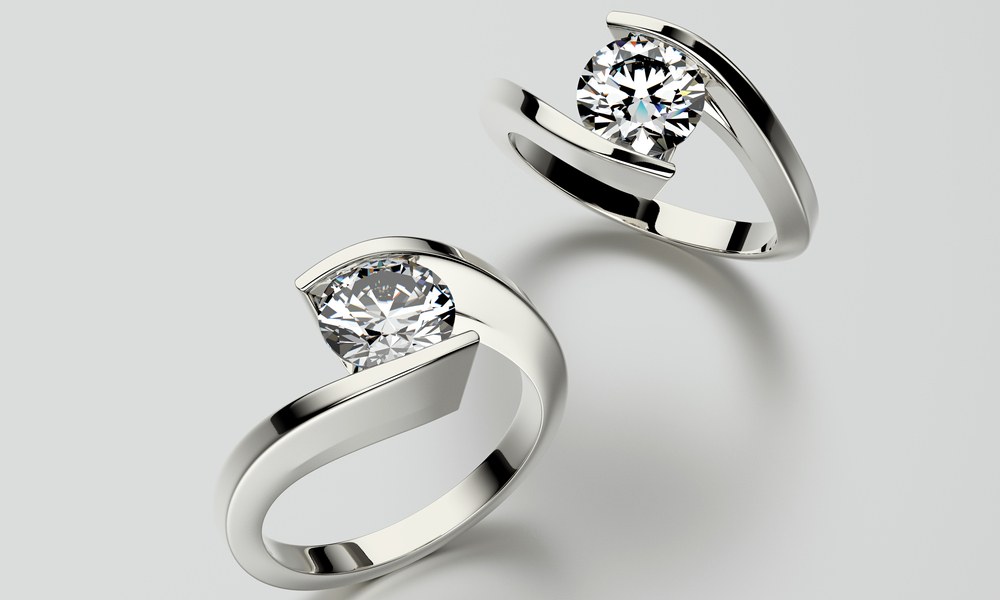
Designs for Tension Setting Rings
The traditional tension design features a round diamond held within the ring band, but as couples seek more unique designs, tension arrangements have become increasingly diverse.
Consider the following design components:
- Angled setups are favored over perpendicular ones.
- Prongs with increased tension where the band is shaped like an omega rather than a circle.
- Channel or flush settings for accent stones within the band.
- Options for various stone shapes.
- Twisted or “bypass” designs that secure the ring along the sides of the band, rather than at the meeting point of the two cut edges.
- Filigree patterns and decorative elements on the band.
- Combination settings where one side of the ring is secured by tension and the other by a single prong.
While tension-setting engagement rings were initially popular for men’s rings due to their simplicity, the wide range of design possibilities available today has led more brides-to-be to choose the subtle beauty of a tension ring.
Whether you prefer a classic diamond setting or the striking beauty of a tension or tension-style setting, it’s essential to thoroughly explore your options and select the diamond setting that best matches your taste and lifestyle.
A tension setting can accommodate nearly any diamond shape, although it is most commonly used with round-cut and princess-cut diamonds.
Tension settings are available in various precious metals, offering robust support and a sophisticated appearance. You can find them in white, yellow, and rose gold, as well as platinum.
Titanium is a popular metal choice for tension rings due to its natural strength and durability. However, many jewelers also offer platinum, along with the previously mentioned metals, and even stainless steel designs.
For added visual interest, multi-tone rings are available, featuring a contrasting metal or ceramic inlay aligned with the stone.
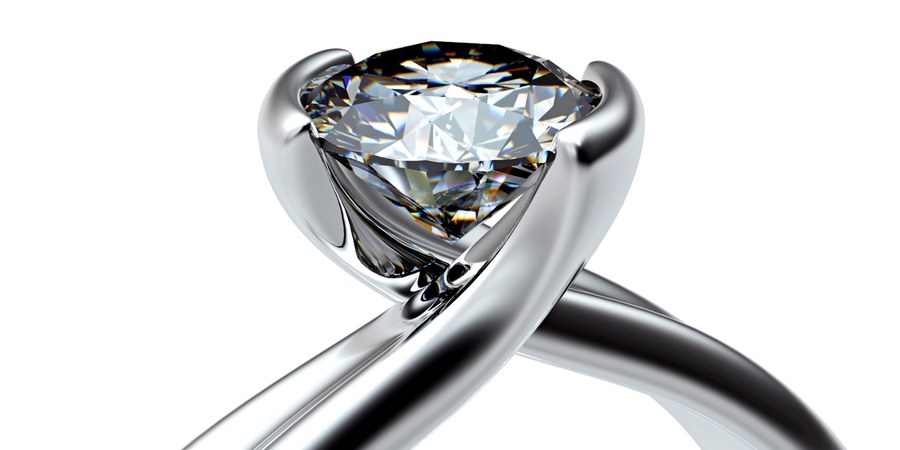
Durability, Lighting And Safety Of Tension Setting
The tension setting, despite its appearance, is actually secure and durable. The center stone is held in place with a minimal chance of it coming loose.
Although not immediately apparent, the sides of the diamond in a tension setting are often nestled within metal grooves or held by small prongs, providing an additional level of security.
Now, let’s talk about the control of tension and the lighting performance in tension settings. The beauty of tension settings lies in their ability to showcase the brilliance of diamonds.
With a tension setting, light can reach the diamond from all angles, allowing for exceptional fire, brightness, and scintillation. The minimal amount of metal in the setting ensures that the stone’s light performance is not obstructed.
Take a moment to observe a spiral tension-set engagement ring from various angles as it rotates. You will witness how the light interacts with the stone, creating a dazzling display.
Moreover, you can appreciate the shape of the stone and its cut quality from every perspective, including the bottom, which is typically obscured in traditional settings once the stone is mounted.
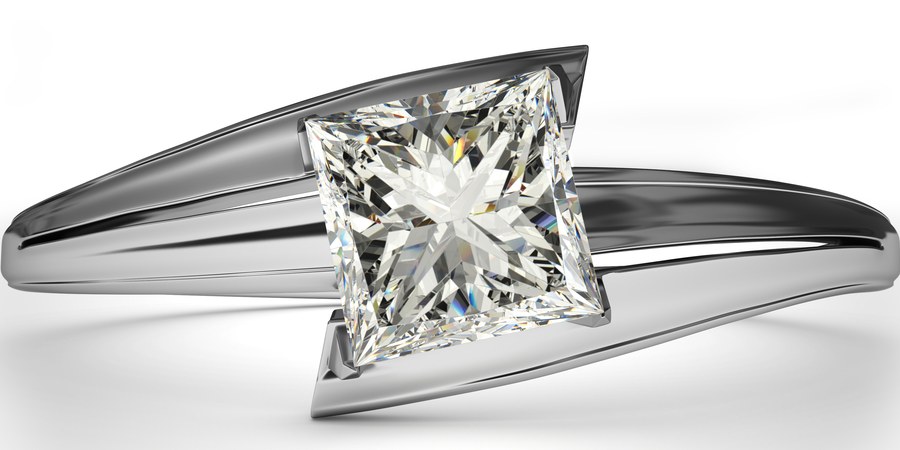
Different Types Of Tension Setting
While the concept of tension ring settings remains the same, there are various styles and combinations that offer their own luxurious appeal. Let’s explore different types and styles of tension settings!
- Classic Tension Set Engagement Rings:
These rings embrace a minimalist aesthetic. The tension is created between the two parts of the ring, providing a modern twist to the classic solitaire design. - Bypass Tension Set Engagement Rings:
In contrast to the traditional tension set rings where the two sides meet in the middle, bypass settings overlap at a 90-degree angle, creating a perpendicular arrangement instead of a parallel one. This style originated during the Victorian era. - Tension Bar Set Rings:
Bar sets deviate from the original tension system by incorporating two metal bars that support and elevate the central diamond. These bars extend forward rather than inward, creating a beautiful frame-like effect. - Split Shank Tension Set Rings:
Split shank rings, known for their distinctive appearance, can also be combined with the tension setting. The shank of the ring is divided into two halves, creating two separate yet interconnected metal pieces. Instead of relying on traditional tension, the split shank supports each side of the central diamond, resulting in an artistically stunning effect. - Pavé Setting Tension Rings:
This variation combines the fundamental tension setting with pave diamonds. A cluster of smaller, melee-sized diamonds is deliberately set along the edges of the ring, adding extra sparkle and brilliance.
Each of these tension setting styles offers its own unique charm, allowing you to choose the one that resonates with your personal taste and style preference.
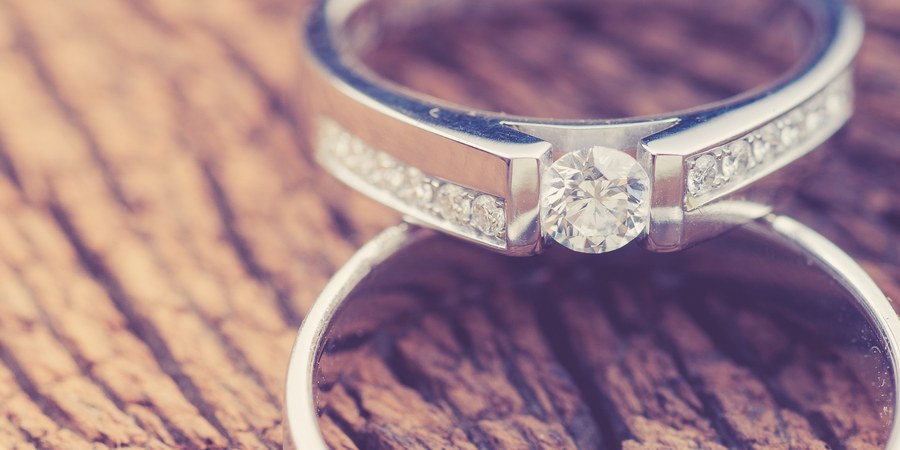
How Do Jewelers Create Tension Sets?
The choice of metal for tension rings is crucial, as it needs to be both flexible and incredibly strong. Traditional metals like gold and silver alloys are too soft to withstand the pressure exerted in tension settings.
Most tension rings are crafted using specific metals, with platinum and white gold being the more common choices. These metals undergo specialized metallurgical processes involving cold-working, hardening, and heat-treating to enhance their strength.
Once the metal is refined, the jeweler meticulously calibrates the ring’s shank to accommodate the specific gemstone. This step is critical and requires precision, as improper calibration can lead to failure.
After taking precise measurements and cutting the metal accordingly, the band is spring-loaded, and the gemstone is carefully positioned. The metal is then released to securely hold the stone in place.
In a tension ring, the force applied to the stone typically amounts to an impressive 12,000 pounds per square inch. This level of force is suitable for gemstones with a Mohs hardness rating of 9.0 or higher.
Even gemstones with a hardness rating of 9.0 or above must be free of inclusions, as even the tiniest flaw within the stone can cause it to fracture under the immense pressure exerted by the tension setting.
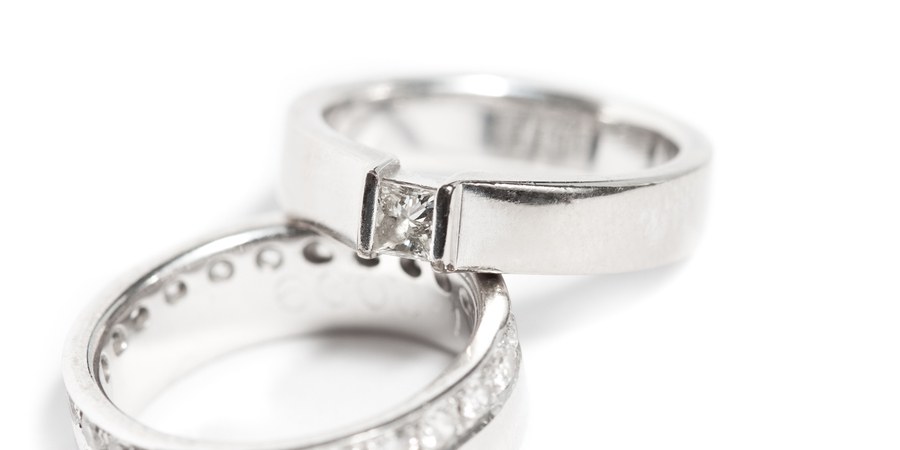
The Brief History Of Tension Settings
While various types of rings have been in existence for centuries, the first tension ring was introduced by jewelers in 1979, although the original concept was devised by Friedrich Becker in the late 1960s.
The inaugural tension ring, known as the Niessing Spanning, was crafted from 18k gold and utilized a combination of components mixed with the gold to enable tension.
In 1987, Steven Kretchmer addressed the need for a robust metal in tension rings and developed a platinum alloy called Plat/SK specifically for this purpose. He patented this invention and offered licenses to interested companies for the production of tension rings.
Friedrich Becker, an employee of the German jewelry manufacturer Niessing, had been experimenting with tension settings since the late 1960s. In 1979, his concept materialized when he successfully used lateral pressure to hold a diamond within a 35-gram, 18k gold ring that had been spring-hardened. This ring had a distinctive design, gripping the finger like a large donut.
Steven Kretchmer, an American jeweler and metallurgist, further refined the tension ring prototype. In 1987, he introduced his platinum alloy, Plat/SK, which allowed for a lighter-weight band without compromising strength. Concurrently, Kretchmer was also working on spring-loading systems, and he obtained patents in 1992 for applying spring pressure to his specially alloyed metals.
Due to the technical complexity and expertise required, only a select few jewelers have truly mastered the art of creating genuine tension-set rings.
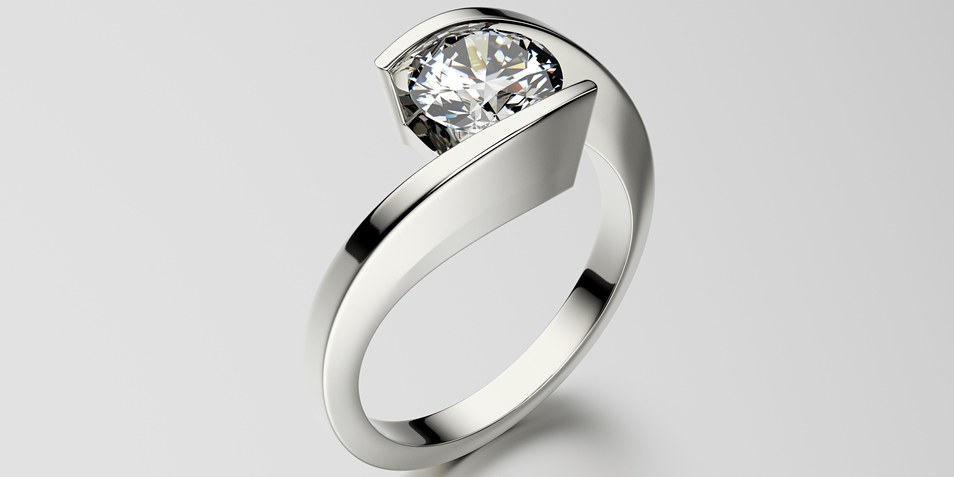
The Benefits/Pros of Tension Setting Rings
Each style of ring setting has its own advantages and disadvantages. When it comes to tension settings, it’s important to consider the pros and cons before making a final decision on an engagement ring style.
Here are some of the benefits of tension settings:
- Securely holds the diamond in place: Despite its appearance, the tension setting provides a secure hold for the diamond, minimizing the risk of it falling out.
- Enhanced light reflection: The minimal metal surrounding the diamond allows for better light reflection, resulting in increased brilliance and fire.
- Distinctive look: Tension settings have a unique and eye-catching design that stands out from traditional settings, making them a popular choice for those seeking something different.
- Low maintenance: Compared to prong settings, tension settings require less maintenance and are less likely to snag on clothing or other objects.
- Contemporary and attractive: Tension settings have a modern and appealing aesthetic that appeals to those looking for a sleek and stylish engagement ring.
- Suitable for all genders: Tension settings are versatile and can be used for both men’s and women’s engagement rings, offering a wide range of options.
One of the main advantages of a tension-set ring is that it allows the diamond to be prominently displayed and seen from multiple angles. The increased exposure to light maximizes the diamond’s brilliance and beauty. Therefore, selecting the right diamond shape and cut becomes even more important when using a tension setting. Princess cuts, emerald cuts, and round-cut diamonds tend to work particularly well in tension settings.
Additionally, tension settings are compatible with various metals commonly used in diamond settings, such as white gold, platinum, yellow gold, palladium, and sterling silver, among others.
It’s worth noting that tension settings can create a stunning and unique look when paired with pear-shaped and oval-shaped diamonds, adding further versatility and charm to these engagement rings.
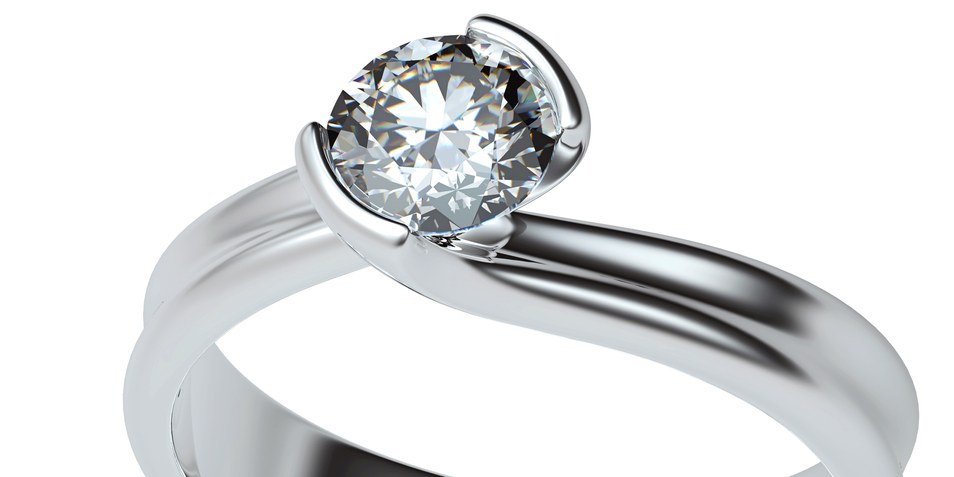
The Drawbacks/Cons of Tension Setting Rings
Like any other engagement ring setting, tension-set diamond rings have a few drawbacks. While these drawbacks are generally minor, it’s important to consider them if you’re considering this style.
- Costly and challenging to resize: Tension settings can be expensive, and resizing them can be difficult. The unique construction of the ring makes resizing a complex process that requires expertise. Not all jewelers may be able to resize tension-set rings, and the resizing cost may be higher compared to other settings.
- Potential for the stone to become loose: While highly unlikely, there is a slight possibility that significant external force could cause the stone to become loose in a tension setting. However, tension settings are designed to securely hold the stone, and instances of stones coming loose are rare.
- Limited resizing options: Tension-set rings are not as easily resized as other settings. Changes in finger size due to weight fluctuations or aging can make resizing necessary, but it is a challenging task. Resizing a tension-set engagement ring requires the expertise of a skilled jeweler, which can increase the cost and make the process more complex.
- Safety concerns for jewelers: Jewelers who work with tension-set rings may have some concerns about the safety of handling and selling these rings. While the stones in tension settings have a good safety record and are unlikely to fall out, jewelers need to address customer complaints about misplaced diamonds. Providing warranties can help alleviate these concerns, but verifying the authenticity of a misplaced diamond can be difficult.
- Not suitable for small diamonds: Tension settings are designed to showcase the brilliance and sparkle of the central diamond. However, smaller diamonds may appear even smaller in a tension setting. This effect can be more pronounced if a softer metal is chosen for the band, as it would need to be thicker to maintain the necessary tension. Using a harder metal like titanium can alleviate this issue to some extent by allowing for a thinner band.
Despite these drawbacks, tension-set rings remain a popular choice for their unique and striking appearance. It’s important to consider these factors and weigh them against the desired aesthetics and qualities you seek in an engagement ring.
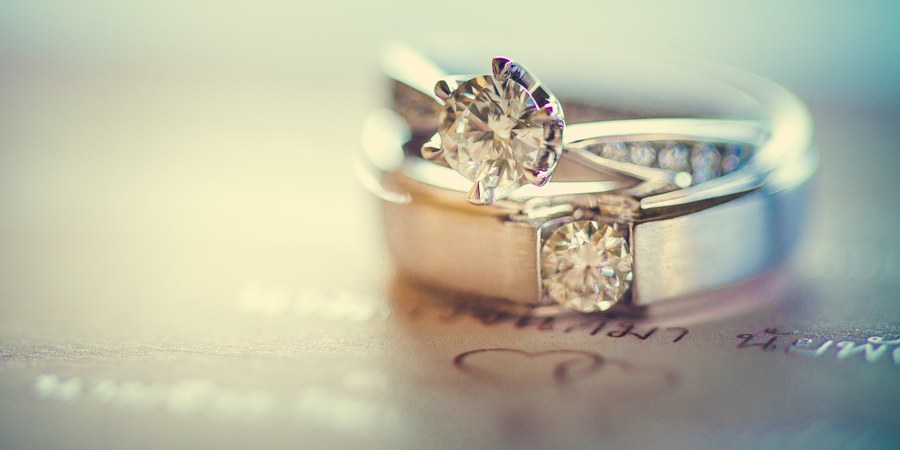
Can You Change The Size Of A Tension Setting?
The main drawback of tension engagement rings is their lack of resizing flexibility. Due to their unique construction, resizing these rings without damaging the setting is challenging.
As a result, if resizing is needed, the ring must be rebuilt, making it an inconvenience. Some online businesses offer free re-creation services to address this issue.
This limitation can be a significant disadvantage, as finger sizes tend to change over time, and resizing is a common requirement for engagement and wedding bands.
Therefore, it’s essential to keep this in mind when considering a tension setting.
Another factor to consider is that tension settings are often custom-made, which can make them more expensive. In addition to the initial cost, you should also consider potential future expenses associated with resizing or re-creation.
While it is possible to resize a tension-set ring, as mentioned earlier, it is a complex and costly process. Not all jewelers are equipped to resize tension settings due to the unique properties of the metal with spring characteristics.
The spring feature of the metal applies pressure to the opposing sides of the stone, hence the term “tension set.” Traditional resizing methods used by jewelers could result in a piece of metal that cannot exert the necessary force to securely hold the stone in place.
Considering these factors, it’s crucial to carefully evaluate the long-term implications and costs associated with resizing and maintenance when choosing a tension setting for your engagement ring.
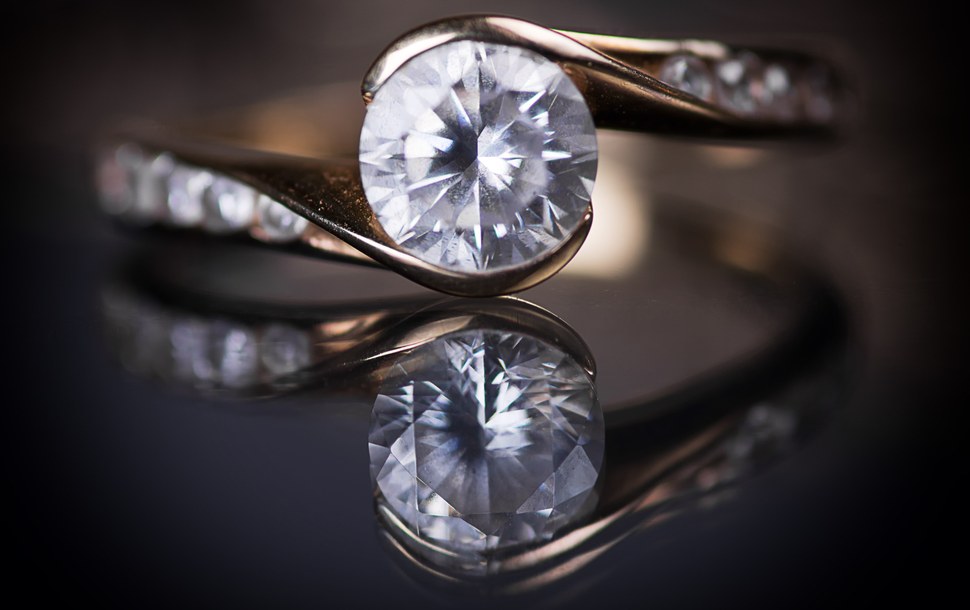
Tension Settings – FAQ (Frequently Asked Questions)
How to Maintain a Tension Setting?
Tension settings require extra care and precautions compared to other types of engagement rings to ensure the security of the stone. Here are some guidelines for taking care of a tension setting:
- Regular Cleaning: Clean your ring with warm water and a mild jewelry cleanser or dish soap. Gently scrub the ring using a soft brush or cloth to remove dirt and debris.
- Avoid Activities that May Cause Damage: Be cautious when engaging in activities that could potentially harm the ring. Remove the ring before participating in strenuous physical activities, sports, or any tasks that may put excessive pressure on the setting.
Is the Tension Setting Safe and Secure?
If you’re wondering about the safety of wearing tension set rings, the answer is yes. Tension set rings are highly secure, and the central diamond or gemstone has very little chance of becoming loose. Although they may appear precarious, the tension in the setting keeps the stone firmly in place.
How Can I Identify Excellent Quality Tension Settings?
When choosing a tension setting, one of the most important aspects to consider is the quality of the diamond. Since the setting highlights the stone prominently, opt for a high-quality diamond with excellent cut and color. Understanding the 4Cs (color, clarity, cut, and carat weight) is essential for selecting a diamond engagement ring, as it serves as a global standard for grading diamond quality.
What Are the Best Metals for Tension Set Engagement Rings?
Titanium is considered one of the best metals for tension set engagement rings. It provides the required strength to create durable tension rings. Additionally, titanium allows for slimmer and lighter designs due to its robust nature. Less metal is needed to maintain the pressure on the diamond, resulting in sleeker and more elegant styles.
Is It Challenging to Find Tension Set Engagement Rings?
Tension set engagement rings are often available from exclusive designers who specialize in creating unique, custom-made rings. While some online jewelry retailers offer tension rings, it is crucial to thoroughly research the company and understand their policies before making a purchase. Ensure that the retailer is reputable and provides necessary warranties and customer support.
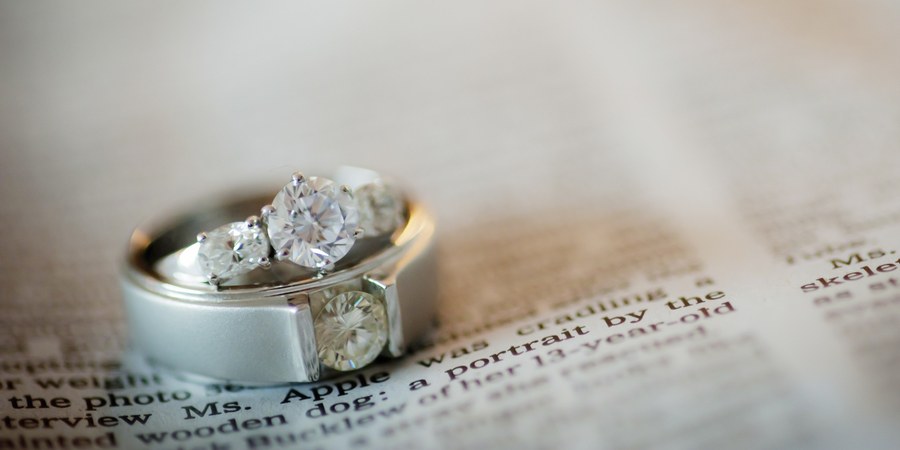
Final Thoughts
Creating a truly unique tension engagement ring requires a combination of exceptional design, craftsmanship, and a stunning gemstone. The modern tension settings available today are often bespoke creations, making them truly special. That’s why we’ve dedicated this article, “Tension Settings: Everything You Need to Know,” to provide you with comprehensive information on this captivating ring style.
As we highlighted at the beginning, and want to reiterate here, tension settings offer several compelling reasons to consider them. They are an excellent choice if you desire a distinctive piece of jewelry that will make a statement and enhance your overall aesthetic and style. When it comes to designing a tension ring, you have the flexibility to choose from a variety of metals, including platinum, white gold, yellow gold, and more.
Throughout this article, we have compared tension settings with other available options, discussed their benefits, and cautioned about potential drawbacks. We have also addressed frequently asked questions (FAQs) to address any concerns or misconceptions you may have had.
We hope that delving into the world of tension settings has been an enjoyable experience, allowing you to gain a deeper understanding of this captivating, one-of-a-kind ring setting.


